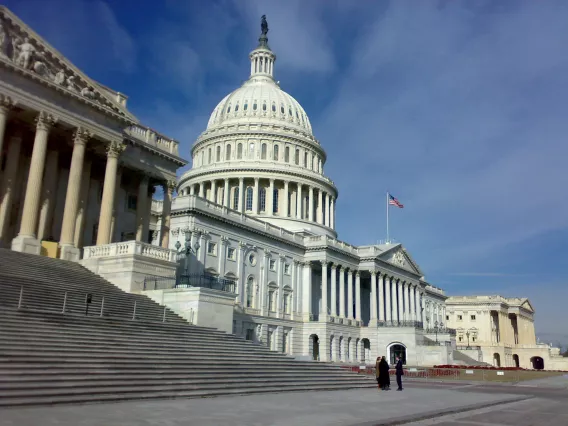- | U.S. Sovereign Debt Crisis: Tipping-Point Scenarios and Crash Dynamics U.S. Sovereign Debt Crisis: Tipping-Point Scenarios and Crash Dynamics
- | Public Interest Comments Public Interest Comments
- |
Introduction to Symposium on U.S. Sovereign Debt Crisis: Tipping-Point Scenarios and Crash Dynamics
This brief introduction outlines the EJW-Mercatus symposium on sovereign debt tipping-points and crash dynamics. It explains the motivation for the symposium, chiefly the need for the imaginative formulation and analysis of possible scenarios. The symposium itself contains contributions by Jeffrey Rogers Hummel, Garett Jones, Arnold Kling, Joseph Minarik, and Peter Wallison.

This introduction originally appeared in the January 2012 edition of Econ Journal Watch.
Download the PDF of "Introduction to Symposium on U.S. Sovereign Debt Crisis: Tipping-Point Scenarios and Crash Dynamics."
We now live in an age of financial crises. My reading is that, unbeknownst at the time, the 1990s were a kind of warm-up act, featuring the Mexico financial crisis, the Asian financial crisis, and the troubles at Long-Term Capital Management. The years 2007-2009 brought a full-scale financial crisis to the United States, only a year or two after talk of “The Great Moderation” had become the conventional macroeconomic wisdom. Suddenly the United States was on the verge of a financial meltdown.
In 2011 the major crisis was in the Eurozone, where Greece, Italy, Spain, Portugal, and Ireland deal with the risk of default. The survival of the Eurozone is now seriously doubted. It is also commonly believed that the troubles of the periphery nations might lead to contagion effects that would severely damage France, Belgium, Finland, and other nations. Our times are now truly scary.
2011 was also notable for the near-default of the United States, based on a budget gridlock in a dysfunctional Congress, and for America’s loss of its traditional AAA credit rating. We are no longer as invulnerable as we once seemed.
When it comes to a sovereign debt crisis, it is no longer possible to say “it can’t happen here.” Right now we are borrowing about forty cents of every dollar the federal government spends, and the imbalance has no end in sight. The American electorate has dug in against both major tax increases and major spending cuts. Super-low borrowing rates have made it all the more tempting to maintain and indeed extend budget deficits. Keynesian economics promises that more government spending will stimulate the economy and create jobs.
More and more economists and budget commentators believe we are in for a rude awakening, and I don’t mean thirty or forty years down the road. I mean within the next ten to twenty years or maybe sooner. Yes, U.S. bond rates are remarkably low, but they were low for a lot of the Eurozone just a few years ago. It is possible that the low rates reflect the precariousness of the situation, and the lack of alternative outlets for invested funds, rather than any rosy picture of America’s fiscal future. Today, an attitude of fiscal complacency would be very risky, especially since the United States government has not settled on any credible plan to stop running budget deficits, even in the longer term.
And that is why EJW and the Mercatus Center at George Mason University have undertaken this symposium: To produce and disseminate a better understanding of what a sovereign debt crisis in the United States would look like and what might bring it about.
The sorry truth is that recent crises were developments for which the world was quite unprepared. To a large extent we have suffered from a failure of imagination. Academics have been remiss in formulating and thinking through a suitable range of possibilities.
So we bring you these essays, in the hope that it’s not too late for them to make a difference. The authors were invited to speculate on possible tipping points and associated triggers, and on crash dynamics—what happens in the crisis. The authors were encouraged to imagine possible futures, not merely as financial analysts but as political economists. We are grateful to the contributors, Jeffrey Rogers Hummel, Garett Jones, Arnold Kling, Joseph Minarik, and Peter Wallison, for their fine work. We believe the essays can help everyone going forward.


